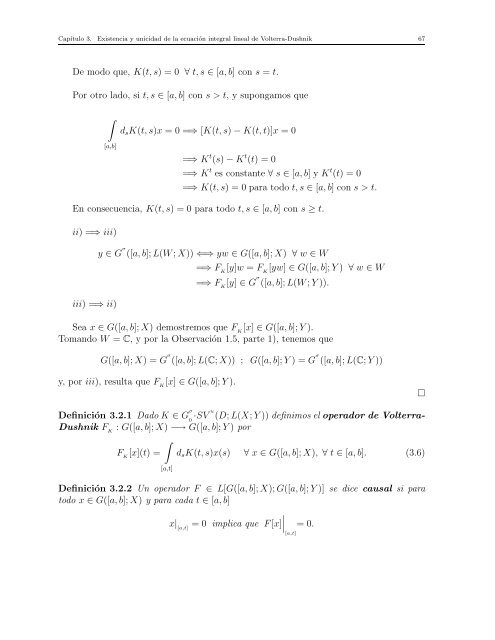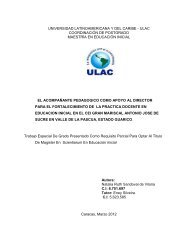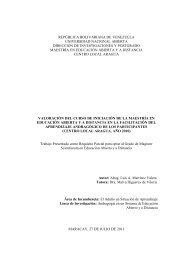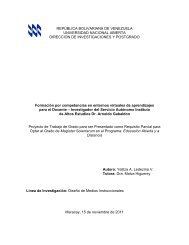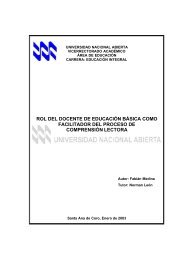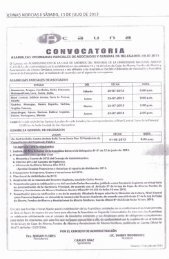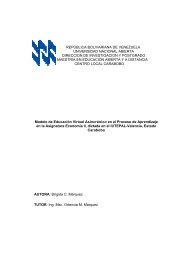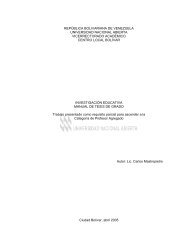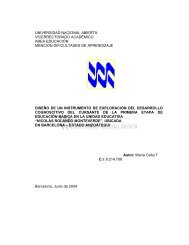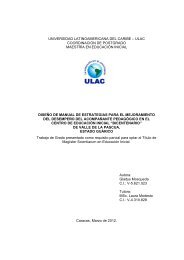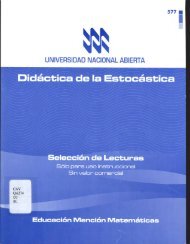Ecuaciones Integrales Lineales de Volterra-Dushnik en Espacios de ...
Ecuaciones Integrales Lineales de Volterra-Dushnik en Espacios de ...
Ecuaciones Integrales Lineales de Volterra-Dushnik en Espacios de ...
Create successful ePaper yourself
Turn your PDF publications into a flip-book with our unique Google optimized e-Paper software.
Capítulo 3. Exist<strong>en</strong>cia y unicidad <strong>de</strong> la ecuación integral lineal <strong>de</strong> <strong>Volterra</strong>-<strong>Dushnik</strong> 67De modo que, K(t, s) = 0 ∀ t, s ∈ [a, b] con s = t.Por otro lado, si t, s ∈ [a, b] con s > t, y supongamos que∫[a,b]d s K(t, s)x = 0 =⇒ [K(t, s) − K(t, t)]x = 0=⇒ K t (s) − K t (t) = 0=⇒ K t es constante ∀ s ∈ [a, b] y K t (t) = 0=⇒ K(t, s) = 0 para todo t, s ∈ [a, b] con s > t.En consecu<strong>en</strong>cia, K(t, s) = 0 para todo t, s ∈ [a, b] con s ≥ t.ii) =⇒ iii)iii) =⇒ ii)y ∈ G σ ([a, b]; L(W; X)) ⇐⇒ yw ∈ G([a, b]; X) ∀ w ∈ W=⇒ F K[y]w = F K[yw] ∈ G([a, b]; Y ) ∀ w ∈ W=⇒ F K[y] ∈ G σ ([a, b]; L(W; Y )).Sea x ∈ G([a, b]; X) <strong>de</strong>mostremos que F K[x] ∈ G([a, b]; Y ).Tomando W = C, y por la Observación 1.5, parte 1), t<strong>en</strong>emos queG([a, b]; X) = G σ ([a, b]; L(C; X)) ; G([a, b]; Y ) = G σ ([a, b]; L(C; Y ))y, por iii), resulta que F K[x] ∈ G([a, b]; Y ).□Definición 3.2.1 Dado K ∈ G σ ·SV u (D; L(X; Y )) <strong>de</strong>finimos el operador <strong>de</strong> <strong>Volterra</strong>-0<strong>Dushnik</strong> F K: G([a, b]; X) −→ G([a, b]; Y ) por∫F K[x](t) = d s K(t, s)x(s) ∀ x ∈ G([a, b]; X), ∀ t ∈ [a, b]. (3.6)[a,t]Definición 3.2.2 Un operador F ∈ L[G([a, b]; X); G([a, b]; Y )] se dice causal si paratodo x ∈ G([a, b]; X) y para cada t ∈ [a, b]∣x| [a,t]= 0 implica que F[x] = 0.∣[a,t]


